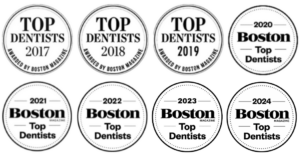5 Reasons Why Veneers Are a Great Investment for Your Smile
A smile is one of the most important features that a person can possess. It is a crucial part of our first impression and can even impact our self-esteem and confidence. However, only some have great teeth; sometimes, even with regular brushing and flossing, we may still find ourselves stained, chipped or misshapen teeth.
This is where veneers come in. Veneers are thin, customized shells placed on your teeth’ front surface to improve their appearance. Here are five great reasons to consider veneers:
1. Veneers Can Give You a Hollywood Smile
Who doesn’t want a perfect smile like those of Hollywood stars? With veneers, you can achieve that dream smile you’ve always wanted. Dental veneers can correct various aesthetic issues, including discolored, chipped, and misshapen teeth. They can also close gaps between teeth and make them appear straighter. Veneers can give you a natural look; no one will even know you have them.
2. Veneers Are Easy to Maintain
One of the best things about veneers is that they are easy to maintain. They don’t require special care or attention, and you can treat them like your natural teeth. All you need to do is brush, floss regularly, and have regular dental check-ups. Good oral hygiene allows your veneers to last up to 10 years.
3. Veneers Are a Quick Fix
If you’re looking for a quick tooth fix, veneers are the way to go. Veneers can give you a perfect smile in just a few visits to the dentist. Getting veneers involves removing a small amount of your tooth enamel, taking impressions of your teeth, and bonding the veneers to your teeth. The entire process can be completed in just two to three visits to the dentist.
4. Veneers Are a Long-Term Investment
While veneers may seem expensive, they are a long-term investment in your smile and overall oral health. Veneers are made from high-quality materials designed to last many years. They also resist staining, so you won’t have to worry about discoloration over time. Investing in veneers can improve your self-confidence, and it can even open doors to new opportunities in your personal and professional life.
5. Veneers Are a Safe and Effective Solution
Veneers are a safe and effective solution for improving the appearance of your teeth. They are designed to look and feel like your natural teeth and don’t cause discomfort or sensitivity. The process of getting veneers is minimally invasive and doesn’t require any major surgery or recovery time. With the help of a skilled cosmetic dentist, you can achieve the smile of your dreams with veneers.
Setting an Appointment with a Cosmetic Dentist
If you’re considering veneers, you must set an appointment with a cosmetic dentist with experience in this area. A cosmetic dentist can assess your teeth and determine whether veneers are the right solution. They can also help you choose the right type of veneers for your needs and budget. During your appointment, your dentist will take impressions of your teeth and create a customized treatment plan tailored to your unique needs.
Conclusion
Veneers are an excellent solution for anyone who wants to improve the appearance of their teeth. They are a quick, easy, and safe solution that can give you a Hollywood smile and boost your self-confidence. You can achieve the perfect smile you’ve always wanted by setting an appointment with a cosmetic dentist. So why wait? Book your appointment today and take the first step towards a brighter, healthier smile.
Are you looking for a cosmetic dentist in Lexington? Look no further than Lexington Smile Studio. We set the standards for exceptional care, providing a full range of dental services for your entire family. Book an appointment today!



